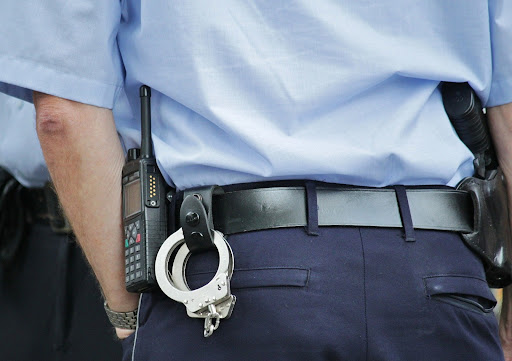
Members of the Secret Service were placed on leave after receiving gifts from two men posing as federal agents. The two men posed as Department of Homeland Security officers in Washington tricking several members of the Secret Service, providing them with tens of thousands of dollars in gifts. The men provided members of the Secret Service and a Homeland Security employee rent-free apartments, iPhones, surveillance systems, a drone, a flat-screen television, a generator, and a case to store an assault rifle. Arian Taherzadeh and Haider Ali began their two-year scheme in February 2020. Both men appeared by videoconference on Thursday at a hearing in federal court in Washington. Mr. Ali held several visas that had been issued by Pakistan and Iran. Prosecutors said Mr. Ali told witnesses he had connections to the Inter-Services Intelligence in Pakistan. Joshua Rothstein, an assistant U.S. attorney, told the judge during the court proceeding on Thursday that both men are flight risks and should remain in custody. A detention hearing for both defendants, who did not enter pleas, is scheduled for Friday afternoon.
Postal Service Uncovers Two Men Posing As Federal Agents
The investigation of Taherzadeh and Ali began after a letter carrier with the United States Postal Service was assaulted in March at an apartment complex where the men had been living. A U.S. postal inspector went to the complex to interview the two men, who were witnesses. The men told the inspector they were investigators with the U.S. Special Police Investigation Unit undercover investigating gang-related activity, as well as the Jan. 6, 2021, attack on the Capitol. Other residents of the building told the inspector the men had identified themselves as Homeland Security agents. According to those residents, the men used other apartment units in the building and drove around in black SUVs equipped with emergency lights that looked like official Homeland Security vehicles. Residents said Taherzadeh and Ali placed various pieces of surveillance equipment around the building and told residents they had access to everyone’s cellphones and personal information. The inspector reported the information to the Homeland Security Office of the Inspector General, which referred the case to the F.B.I.

Two Men Charged with Posing as Federal Agents
Taherzadeh, 40, and Ali, 35, were charged with one count of false impersonation of an officer of the United States, the affidavit said. Four members of the Secret Service have been placed on administrative leave while the case is being investigated, according to an affidavit filed in federal court in the District of Columbia. The F.B.I. arrested the men, both of whom are U.S. citizens, on Wednesday in Southeast Washington. “Taherzadeh and Ali have attempted to use their false and fraudulent affiliation with D.H.S. to ingratiate themselves with members of federal law enforcement and the defense community,” David Elias, an F.B.I. special agent, wrote in the affidavit. Elias did not say why the men carried out the impersonation.
One witness spoke of being recruited by Taherzadeh and Ali to be a Homeland Security employee and serve on a task force. As part of the recruitment process, the men shot the witness with an Airsoft rifle “to evaluate their pain tolerance and reaction,” Mr. Elias wrote.
The men told the witness, who was not identified in the affidavit, that they needed to conduct research “on an individual that provided support to the Department of Defense and intelligence community,” according to the affidavit. Federal prosecutors declined to give a motive or provide further information about the two men. Michelle Peterson, a federal public defender who represented both men, said they planned to ask to be released at the hearing on Friday. If convicted on the impersonation charge, they face up to three years in prison and a $250,000 fine.
Real Federal Agents Find Arsenal of Law Enforcement Equipment
Rothstein said investigators searched five apartments and several cars used by Taherzadeh and Ali. They found equipment and paraphernalia associated with law enforcement, including body armor, gas masks, zip ties, hand-held radios, a drone similar to ones used by S.W.A.T. teams, Homeland Security patches, 40 to 50 rounds of ammunition, weapon stocks, and documents that were stamped “law enforcement sensitive.” Taherzadeh often carried a Glock 19. He sent one Secret Service agent pictures of himself posing in front of a stack of large cases that are often used to carry firearms. He also sent an agent a photo that he claimed showed a training session for Homeland Security Investigations.“The investigation revealed that the photo Taherzadeh sent is a stock photo from the internet,” Mr. Elias wrote. “Although Mr. Taherzadeh was very outspoken about his job,” Mr. Elias wrote, “he claimed that he was part of a covert task force.”
The White House did not respond to a request for comment. In a statement, a spokesman for the Secret Service said that the agency was working with investigators and that the employees involved in the case had been restricted from accessing Secret Service facilities, equipment, and systems. “The Secret Service adheres to the highest levels of professional standards and conduct and will remain in active coordination with the Departments of Justice and Homeland Security,” the spokesman, Kang Lee, said. How could something like this go on for so long before it was detected? What security risks do these two men pose? How could not one, but two people with fake credentials, trick part of the secret service? How can we trust the security of the nation if we can’t trust the people who are supposed to protect us?
Written by: Erinn Malloy

